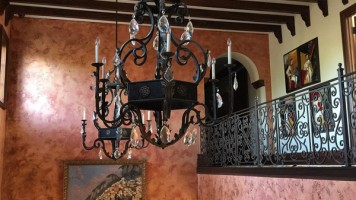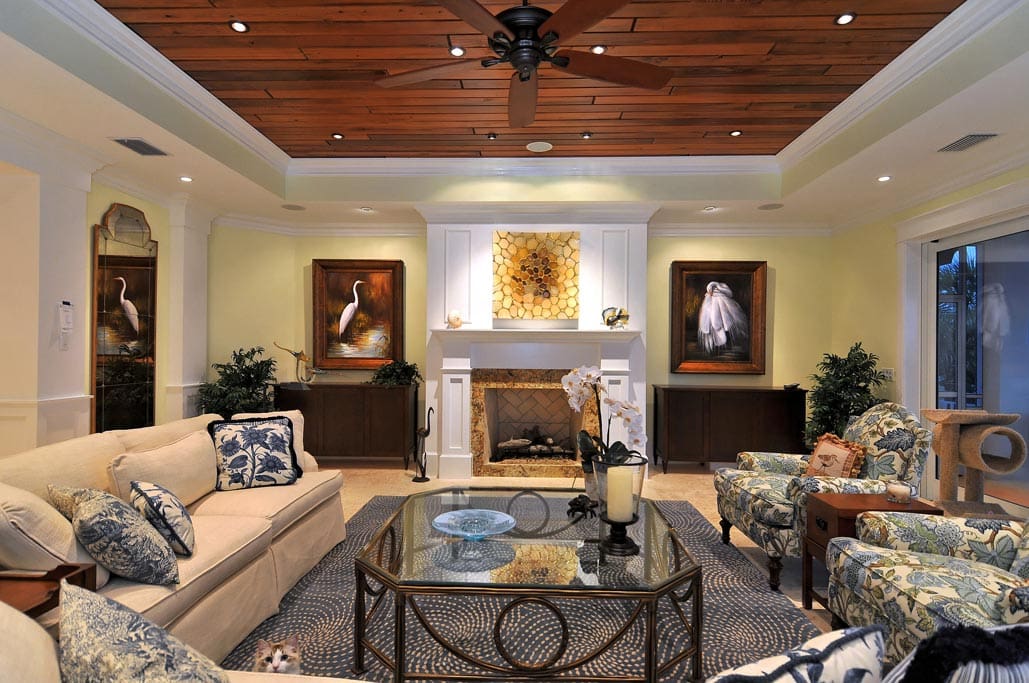There is a lot that goes into choosing the best paint color for your home or place of business; you may want a tranquil blue to make your customers feel comfortable, or a bright yellow to liven up a kitchen accent wall. With all the factors at play it’s easy to overlook one very key element in coloring a space: lighting. Lighting, either artificial or natural, can change that lovely bright yellow you saw in a photo or at the paint store into a color you hardly recognize once it’s on the walls.
Paint Color Changes with the Day
Choosing paint in natural sunlight is ideal. The sun balances warm and cool tones giving you the purest light to find the best color paint. Of course, natural sunlight changes throughout the day and is affected by its angle in reference to your house. These angles create four types of exposure depending on which direction your room is facing:
- Northern exposure: Sunlight coming from the north is indirect, causing a bluish, cool tone.
- Southern exposure: Natural light from the south is more direct, with high-intensity quality, brightening color choices.
- Western exposure: Rooms facing the west experience a lack of natural light in the morning, causing your color choice to look lackluster with more shadows.
- Eastern exposure: Given that the sun rises in the east, the warmest and most concentrated light will happen before early afternoon and will cool off in tone in the evening.
In rooms with primarily natural light, it is best to paint several small samples in various shades of your selected color, some lighter and some darker. Leave the paint samples on the wall and check it several times a day to see how the changing sunlight affects the color.
Optimal Color in Artificial Light
Not all rooms are bathed in natural light, so it is equally important to pay attention to the interior, artificial lighting when choosing the right color. The typical interior space is lighted by incandescent or fluorescent bulbs, or sometimes a combination of the two. The traditional incandescent bulb gives off warm, yellow-toned light which accentuates colors on the red end of the spectrum while softening blues, greens, and purples.
Fluorescent bulbs, often used in commercial interiors, work on the other end of the spectrum, enhancing blue-toned colors. Combining both types of bulbs can have a neutralizing effect on your chosen color. Using halogen lightbulbs most closely mimics natural sunlight. It is white, as opposed to yellow or blue toned, and it doesn’t alter colors as heavily as other lightbulbs. Though artificial light isn’t as pure as sunlight, its best quality may be its consistency. Artificial light in rooms without windows won’t change throughout the course of the day.
Consult the Paint Professionals
While browsing for the perfect color choice, remember that most paint design pictures on the web and in industry magazines are taken by professional photographers, using supplemental lighting such as high intensity studio-style lights. Not all colors will translate perfectly into your space. To ensure exceptional colors in any setting, contact the experts at West Coast Painting. You can contact West Coast Painting today to get your free painting estimate, or call us direct: 941-320-0332.



